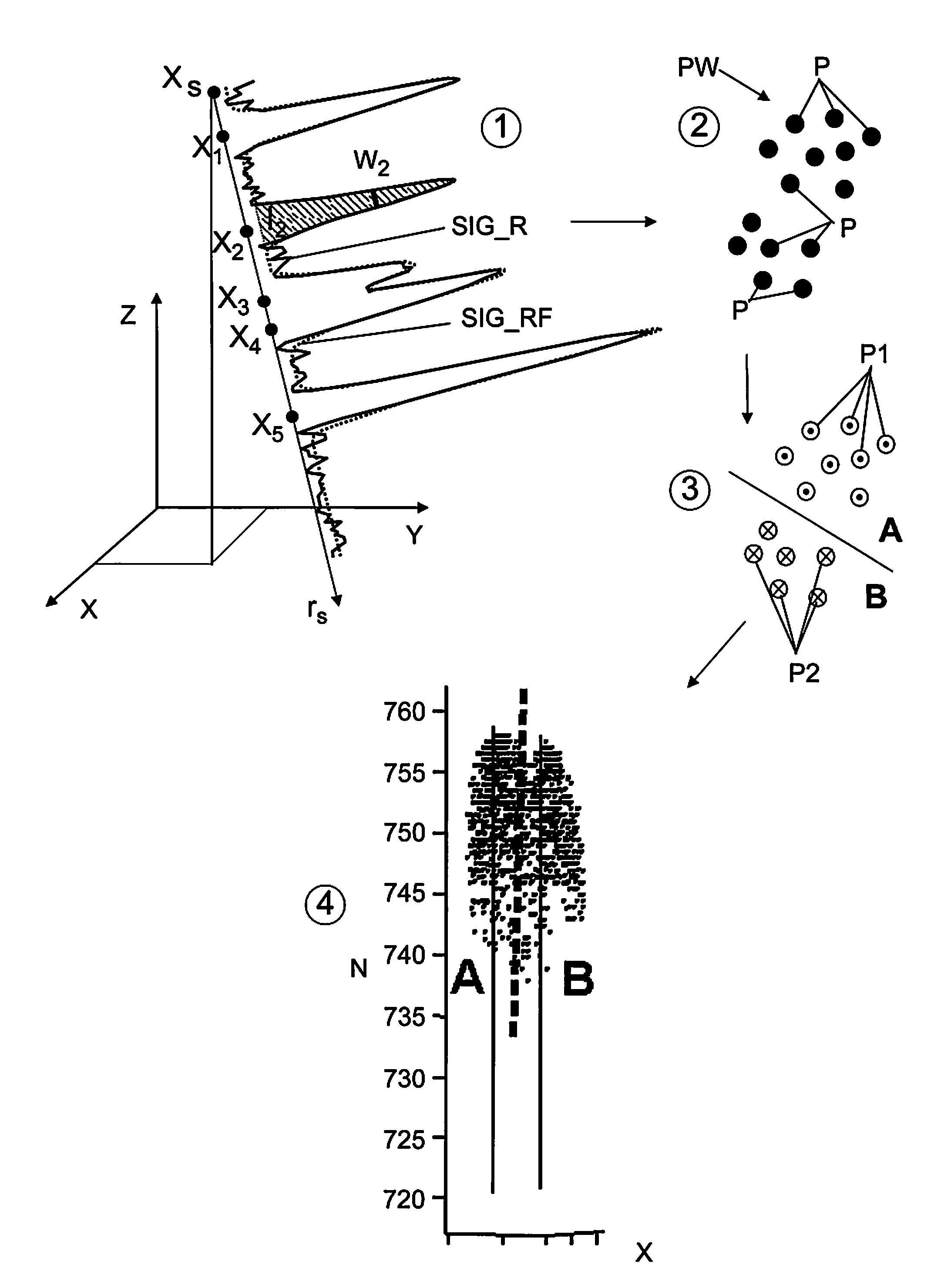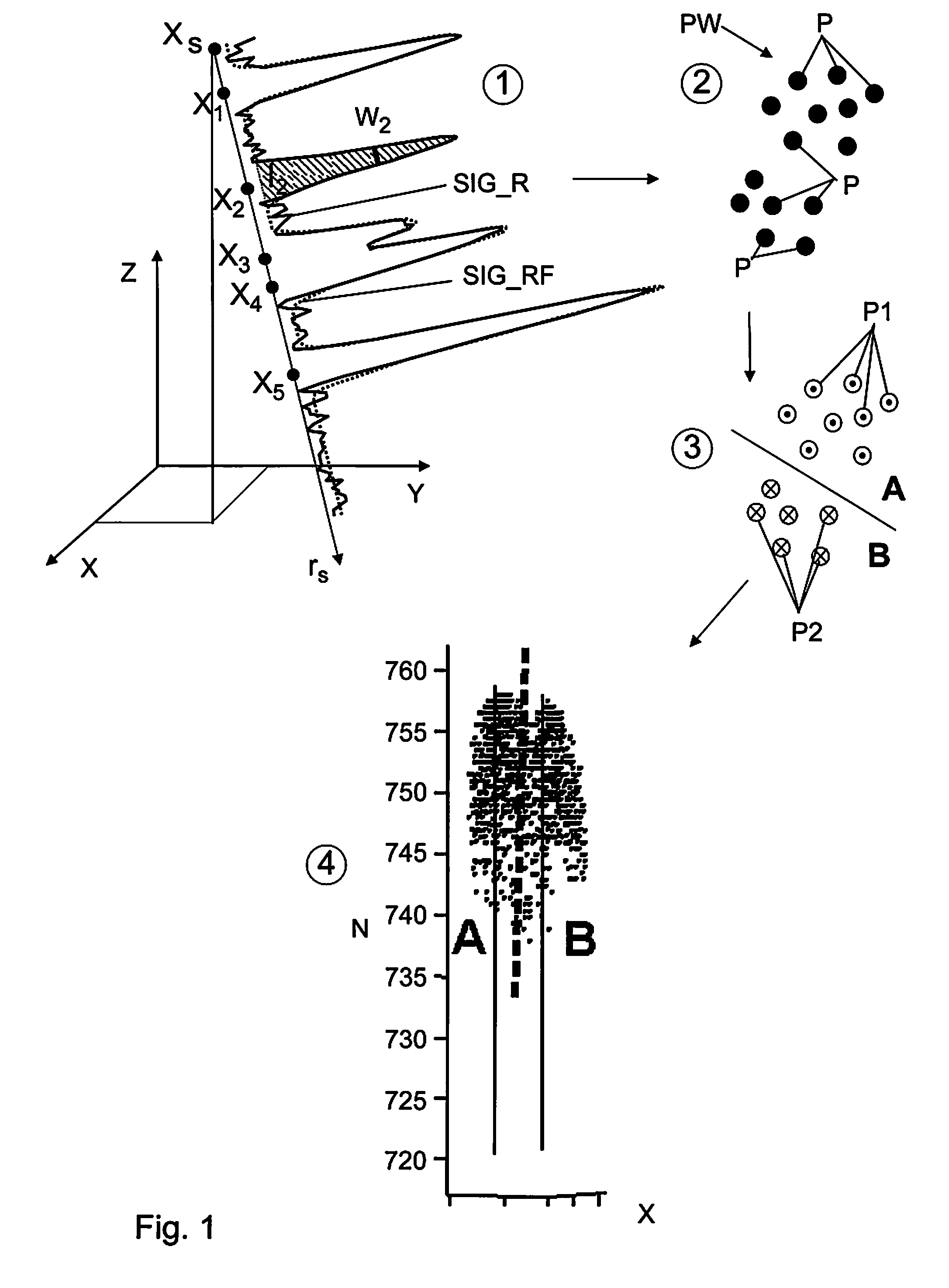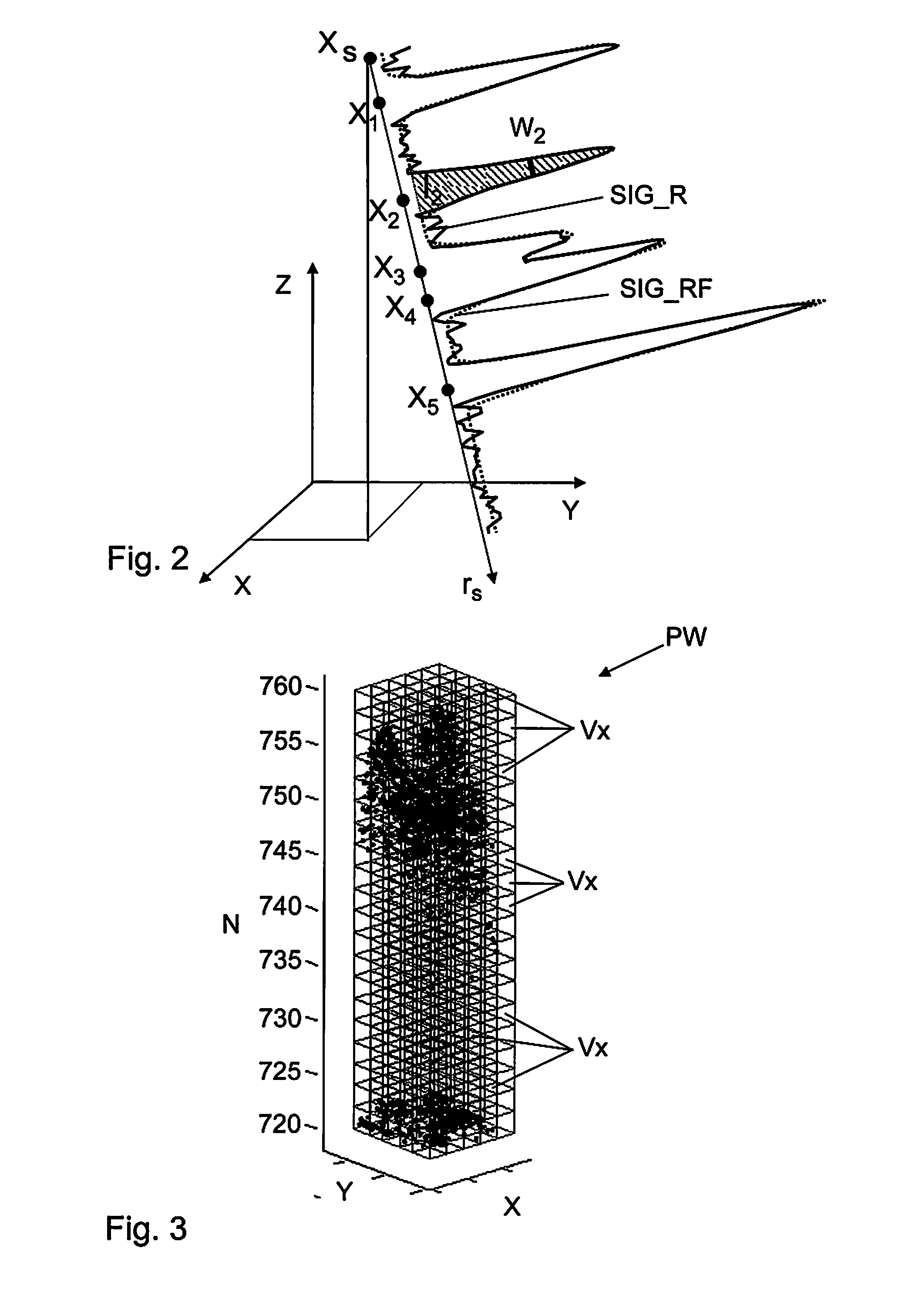Method and device for computer-aided segmentation of an environment into individual objects
- Summary
- Abstract
- Description
- Claims
- Application Information
AI Technical Summary
Benefits of technology
Problems solved by technology
Method used
Image
Examples
Embodiment Construction
briefly described above will be rendered by reference to specific embodiments that are illustrated in the appended drawings. Understanding that these drawings depict only typical embodiments of the invention and are not therefore to be considered to be limiting of its scope, the invention will be described and explained with additional specificity and detail through the use of the accompanying drawings, in which:
[0038]FIG. 1 shows a schematic diagram of the steps of the method according to the invention;
[0039]FIG. 2 shows an exemplary backscattered signal with temporal resolution of a laser beam emitted by a laser scanner, with which a three-dimensional segmentation can be carried out;
[0040]FIG. 3 shows a schematic diagram of the division of a section of a wood volume into a regular grid of volume elements; and
[0041]FIGS. 4a to 4c show exemplary embodiments of resulting segmentations of trees by three-dimensional division of a point cloud determined in a computer-aided manner.
DETAIL...
PUM
 Login to View More
Login to View More Abstract
Description
Claims
Application Information
 Login to View More
Login to View More - R&D
- Intellectual Property
- Life Sciences
- Materials
- Tech Scout
- Unparalleled Data Quality
- Higher Quality Content
- 60% Fewer Hallucinations
Browse by: Latest US Patents, China's latest patents, Technical Efficacy Thesaurus, Application Domain, Technology Topic, Popular Technical Reports.
© 2025 PatSnap. All rights reserved.Legal|Privacy policy|Modern Slavery Act Transparency Statement|Sitemap|About US| Contact US: help@patsnap.com



